I put off learning sourdough baking for a long time because I thought it would take over my life and require more time than I had to give. But I’ve found a way to have plenty of fresh bread each week, without too much fuss.

The links below may be affiliate links, meaning I earn a small compensation at no extra cost to you. See my full disclosure policy here.
Like many people, I learned how to make sourdough during the pandemic. I always had this idea that sourdough baking was too time-consuming and tedious, and quite frankly, more than I wanted to figure out at the time.
Then the pandemic hit and we were all stuck at home eating our feelings. And since bread is one of my favorite kinds of pick-me-ups, I decided it was time.
That and Venison for Dinner was showing how to make a sourdough starter (basically) out of thin air (it’s magic!). I took the plunge.
Fast forward two years and I have baked multiple loaves of sourdough almost every week since. (I’m neither a robot, nor superman, so I’ve taken time off for travel, busyness, or simply a lack of desire.)
In the course of this time, I’ve discovered that sourdough baking does not actually have to be very complicated and it can, in fact, fit into my already full life.
My Weekly Sourdough Baking Rhythm— Bake Once, Fresh Bread for a Week
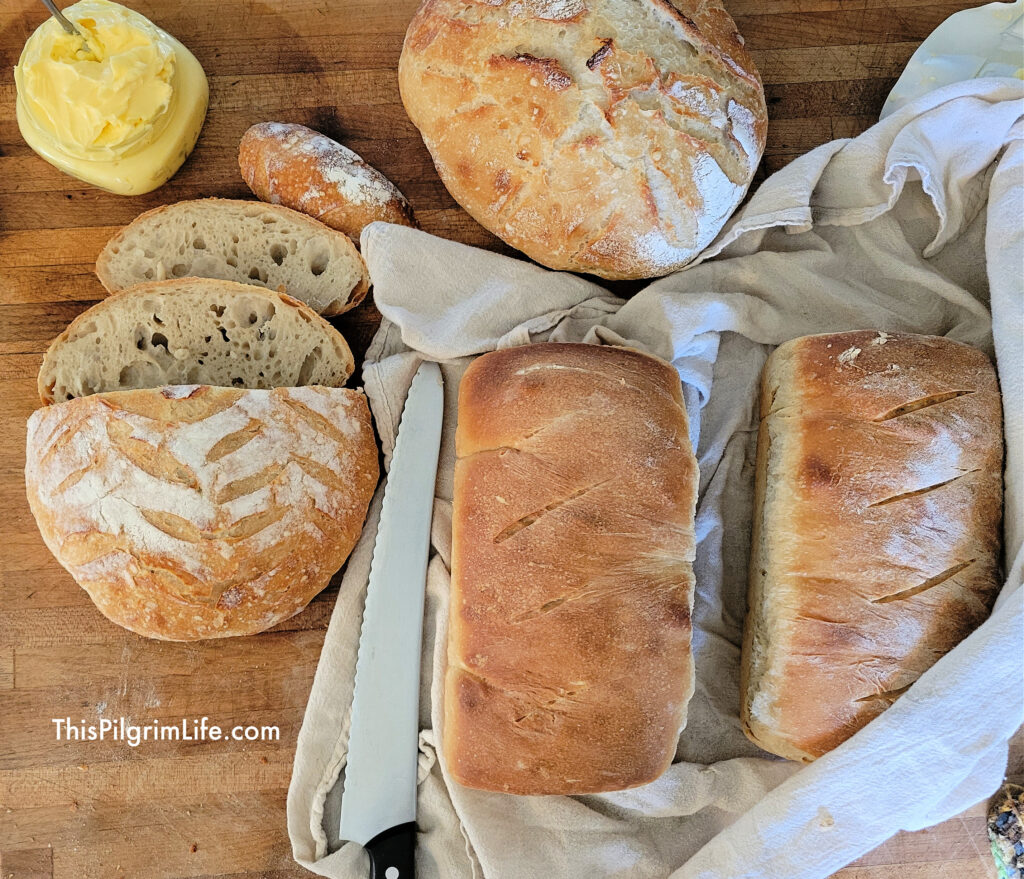
When you find something that works, you stick with it until you have a reason to stop. This is why my sourdough baking has been on autopilot for months and months.
(links to recipes, recommendations, and more at the bottom of the post!)
I follow the same rhythm every week so I’m not having to figure out timing over and over, and I always bake the same two types of bread, sometimes add in a third, but always sandwich bread and boules.
Also worth noting is that I only bake once for the entire week. In order to have enough, I like to bake at least two loaves. Towards the end of the week, drier sandwich bread can be toasted or made into grilled sandwiches. Boules can be revitalized by putting them under running water for 30 seconds, and then placed in the oven at 350 for ten minutes. OR, leftover dry bread can be made into breadcrumbs or croutons (or frozen in cubes for later bread pudding or stratas).
DAY 1 :: MORNING
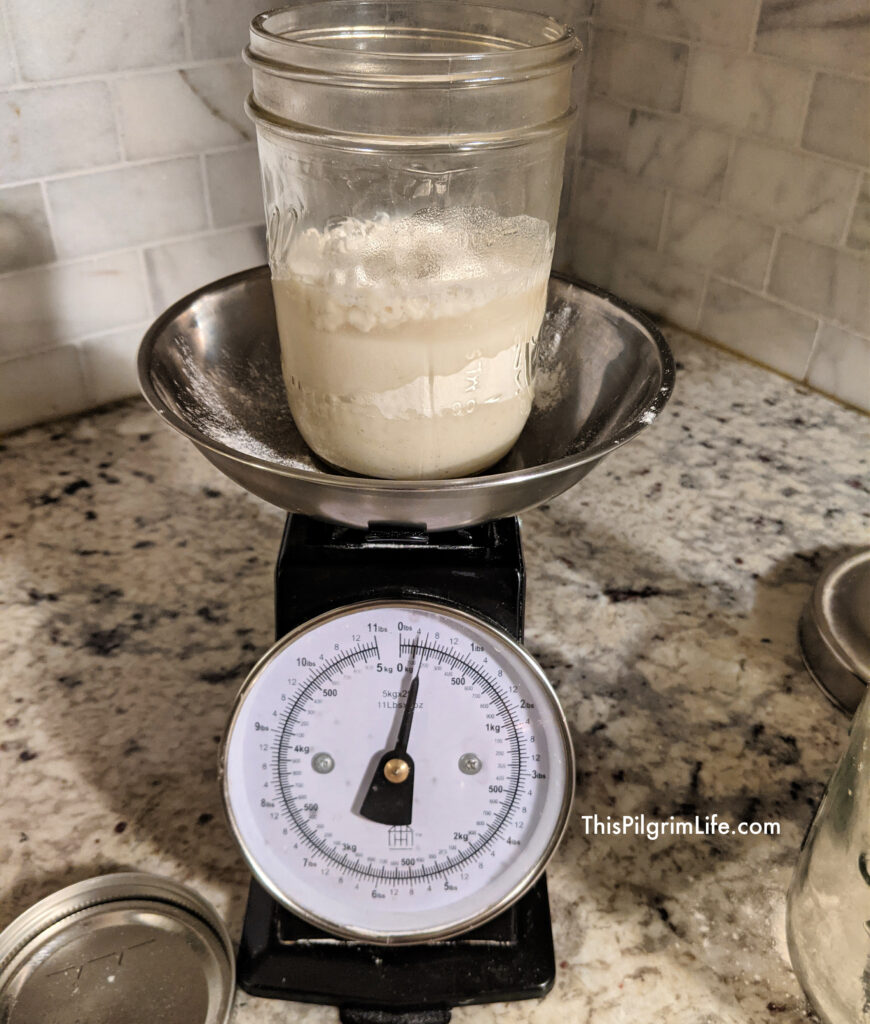
Feed 4-5oz of room temperature starter. (If you’re taking starter out of the fridge, you may need to give it an extra feed or two before it’s active and ready for baking again).
Mark the starting level on the jar with a rubberband and wait for the starter to double.
DAY 2 :: NIGHT TIME/ JUST BEFORE GOING TO BED
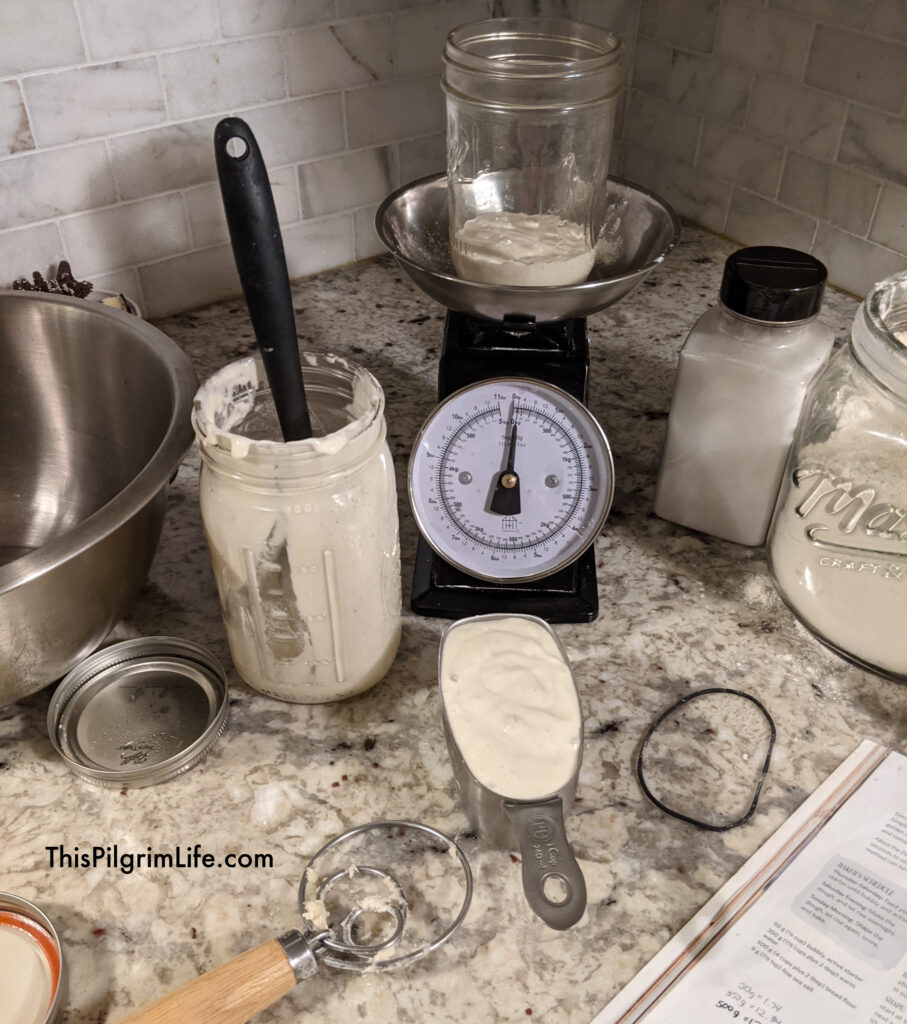
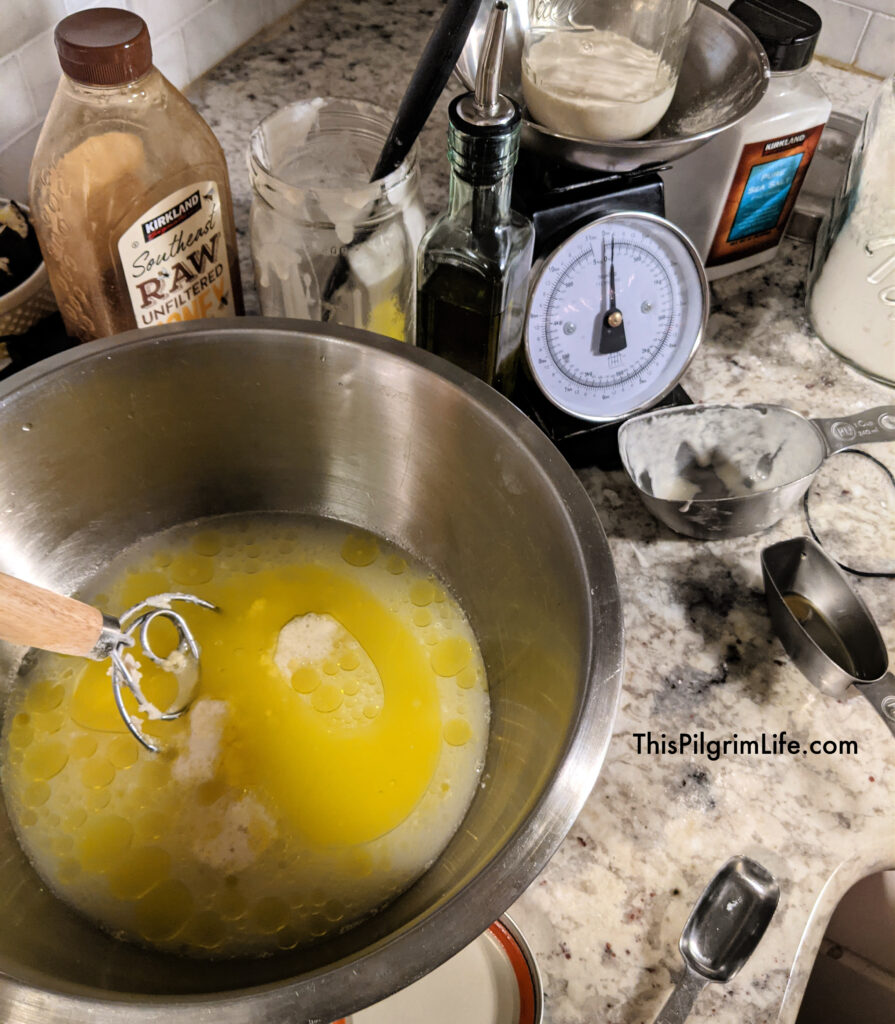
Use my now-doubled starter to make the doughs for the loaves I will bake in the morning. I always start by dividing up the current amounts of active starter into the different mixing bowls, making sure to leave 2oz to go ahead and feed again.
Once the starter is divided up, I mix together my boule dough first. The recipe calls for a thirty minute rest after mixing up the dough, then to stretch and fold the dough before letting it rise overnight. Because the sourdough sandwich bread does not call for an additional step before the overnight rise, if I mix together the boule first, it will be almost ready for the last step after I mix together the sandwich dough and tidy up a bit.
A few dough mixing tips I do that help me keep my sourdough rhythm on autopilot:
- I always use the larger mixing bowl for the sandwich bread. It rises a little more than the boule, and I don’t have to label the bowls or guess which is which in the morning
- I cover the bowls with plastic wrap. I have tried using slightly damp kitchen towels and beeswax wraps, but both covers resulted in a dry “crust” on the top of my dough after rising all night. Using plastic wrap keeps the dough from drying out.
- This is a small tip, but when I mix together the sandwich bread dough, I use the measuring cup first for oil, then for honey. This way the honey slips right out of the cup. (This tip works for all kinds of baking recipes).
DAY 2 :: BAKING MORNING
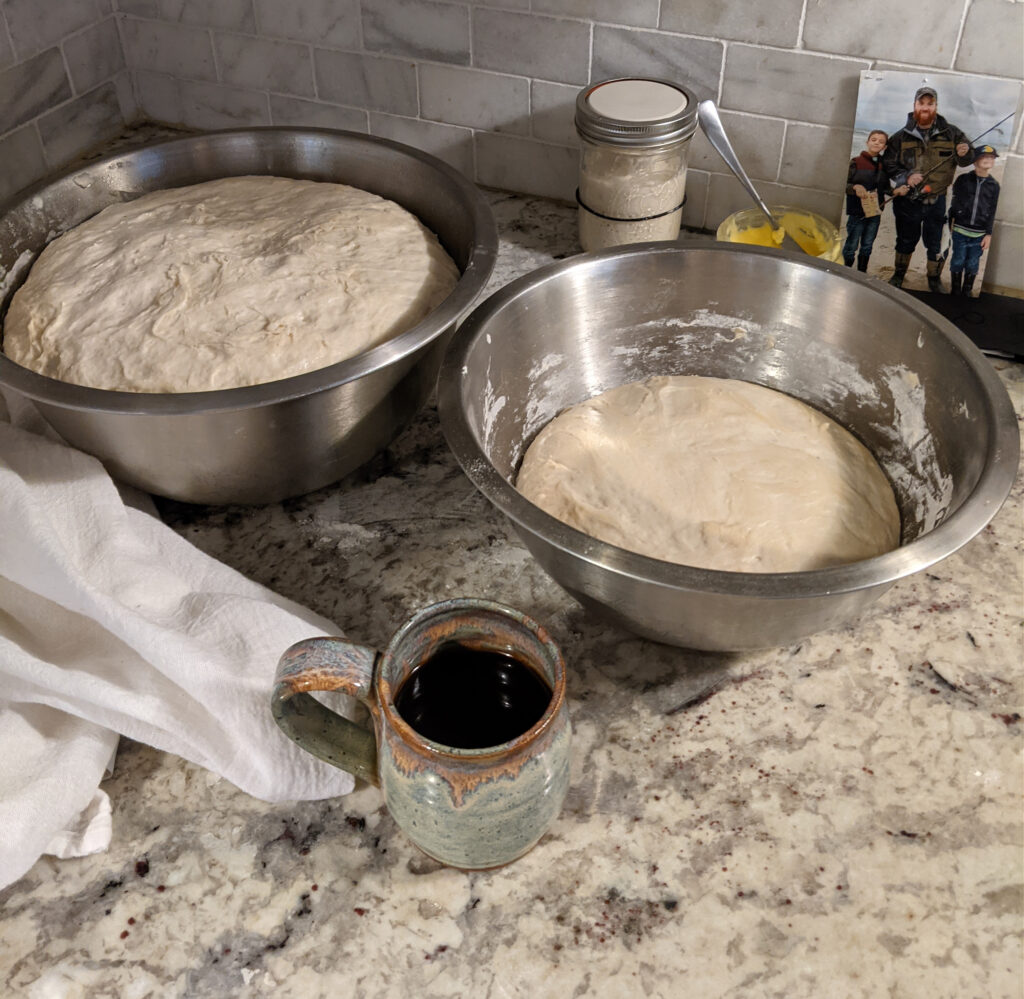
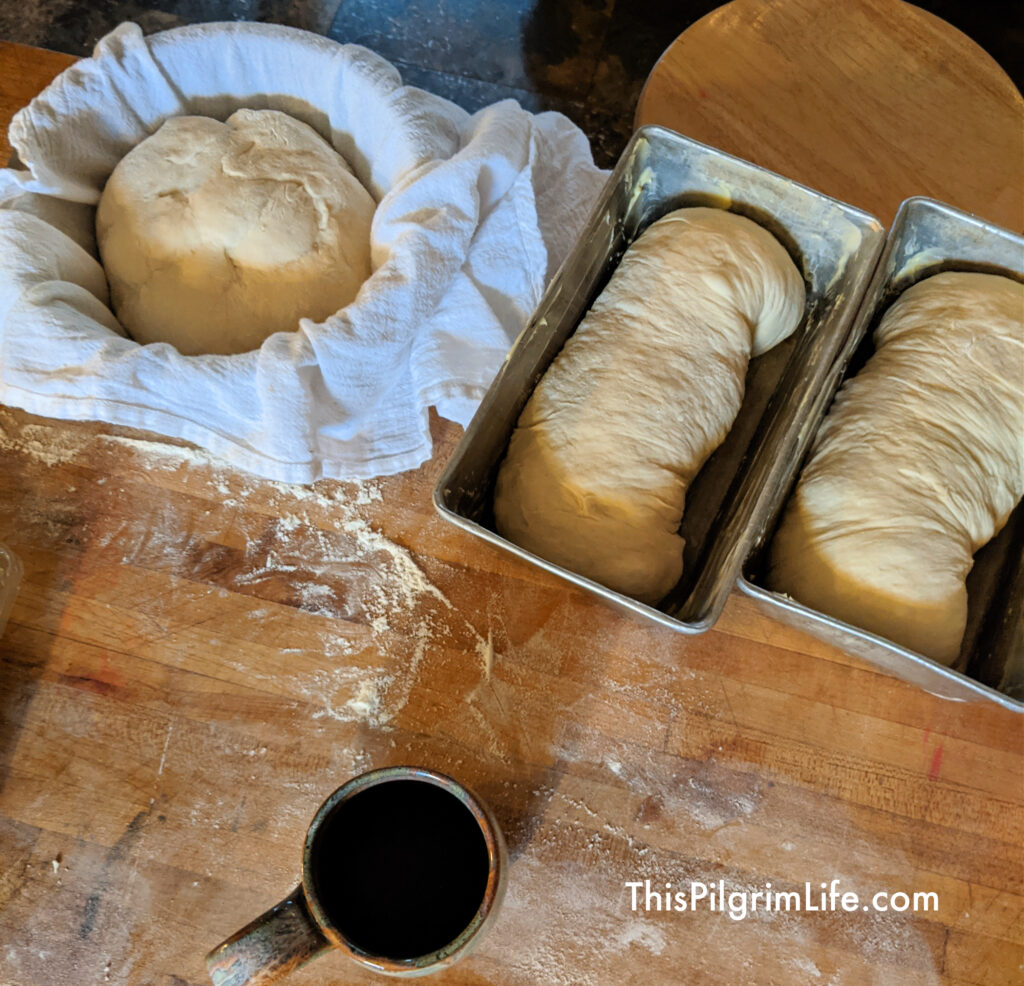
Shaping
I typically start the baking process around 9 am the next morning. The dough has had plenty of time to rise, I have had time to drink my first coffee, and get surfaces ready for shaping the dough and baking.
I start by turning out the boule dough onto a floured surface. Divide into 2 or 3, depending on what I made, and immediately shape into round balls. The recipe calls for a 5 minute rest before transferring to bowls to rest for another 30 minutes.
The sandwich bread dough is likewise turned out onto a floured surface, and divided in half. This recipe gives a tip to do a pre-shape and rest before rolling the dough and transferring into bread pans to rise. This 10 minute rest yields a better rise. (Turn out on counter. Tri-fold. Ten minute rest. Roll in log. Transfer to baking pans to rise.)
Baking

The boules bake first. I prefer to start my boules in my cast iron double baker, so I stagger the cooking time to bake 2 boules.
- Transfer boule #1 to parchment paper. Score with lame. Place in hot double baker (larger pot on top). Bake covered in oven for 20 minutes.
- After 20 minutes, transfer boule #2 to parchment paper. Score with lame. Switch boule #1 to second 10” skillet so it can finish cooking 20-25 minutes uncovered. Place boule #2 in hot double baker, covered. Both loaves/pans go back in the oven.
- After another 20 minutes, the first boule comes out and the cover is removed from the second boule.
- Another 20-25 minutes and the second boule comes out.
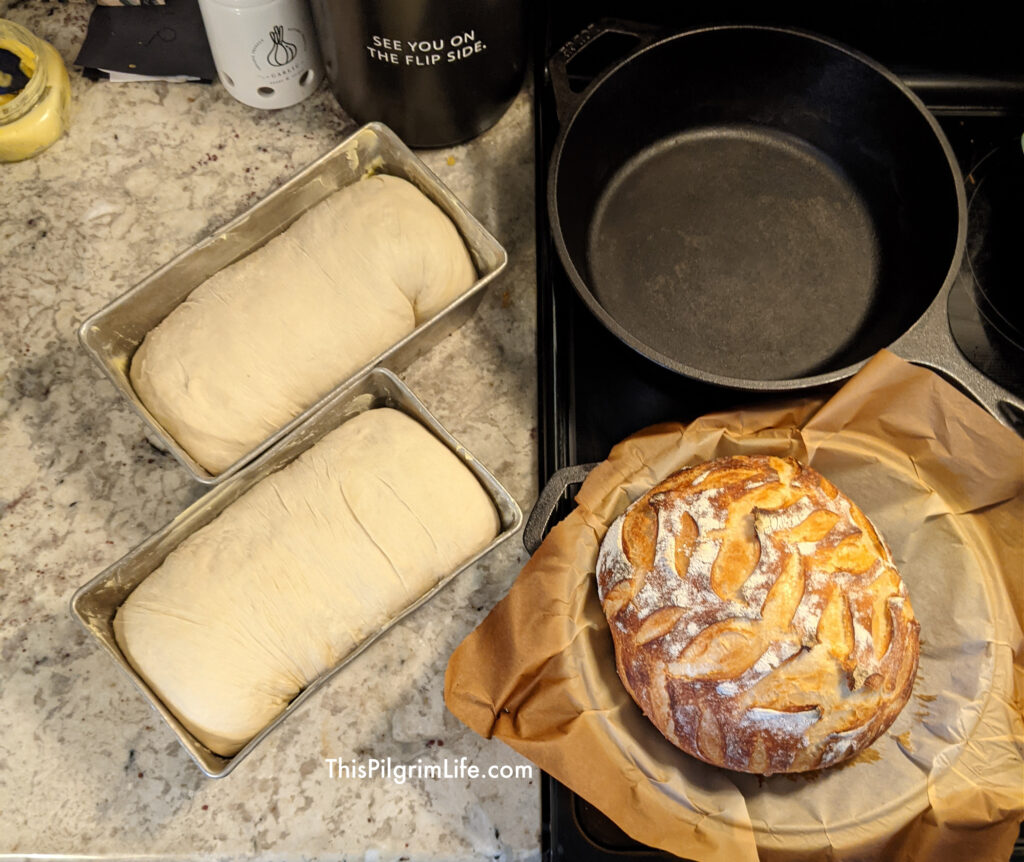
The sandwich bread usually takes about 2 hours or so to rise, depending on the temperature of the kitchen that day. I turn off the oven from baking the boules until the sandwich bread is ready.
Both sandwich bread loaves get scored. Both go into the oven at the same time. They cook for 20 minutes uncovered, then I place a loose piece of foil over the loaves to finish cooking for about 25 more minutes.
When the sandwich bread comes out of the oven, I remove it from the bread pans and wrap them both up in a large tea towel. This helps to soften the crust. (Thanks to @venisonfordinner for that tip).
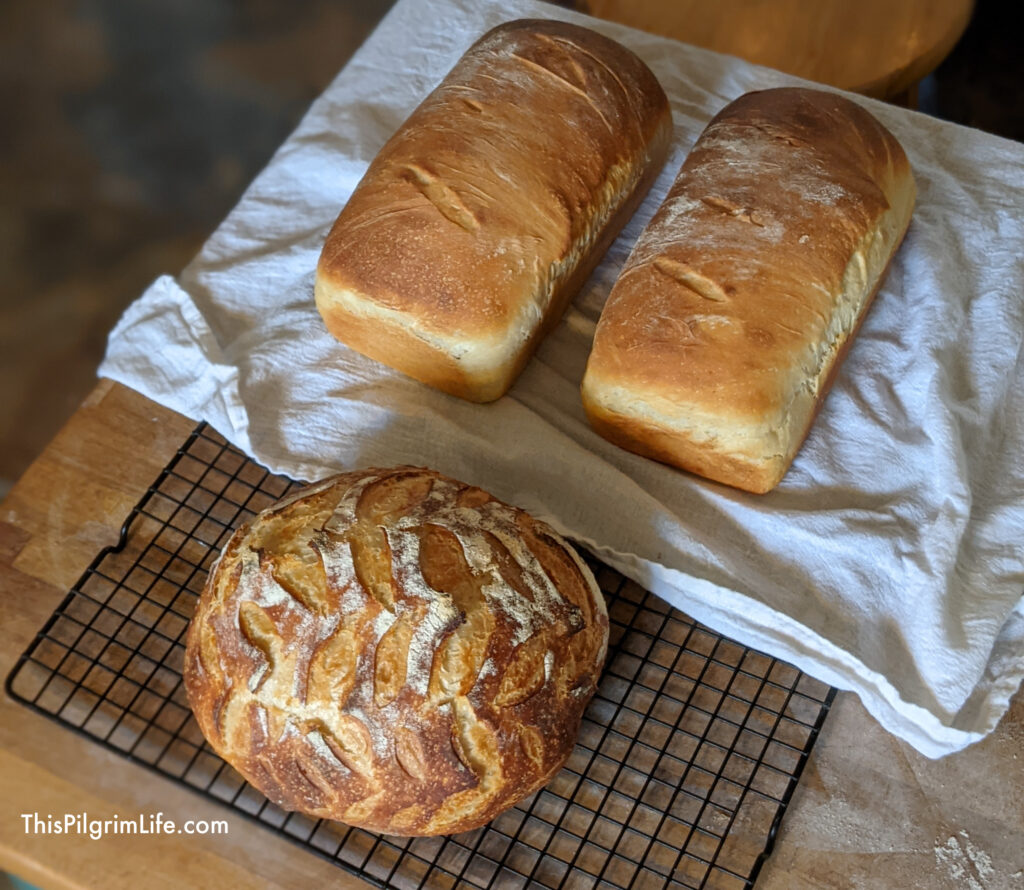
DAY 2 :: AFTERNOON STORAGE
Once the bread has cooled, it’s time to store them. Storing the boules is really easy, because usually I don’t do anything! Whenever I put the boules in bags, they lose their crispiness, so I just leave them out. If it’s been a few day before we dig into the second one, I just run it under water for about 30 seconds, then place it in a warm oven to rehydrate for about 10 minutes.
As for the sandwich bread, I’ve used several different methods for storing them. I really like bread bags, I used to use extra-large beeswax wraps, but these days I usually just use plastic wrap to keep them from drying out. (Though I really should just order more bread bags because they are my favorite).
RECIPES & FAVORITE TOOLS
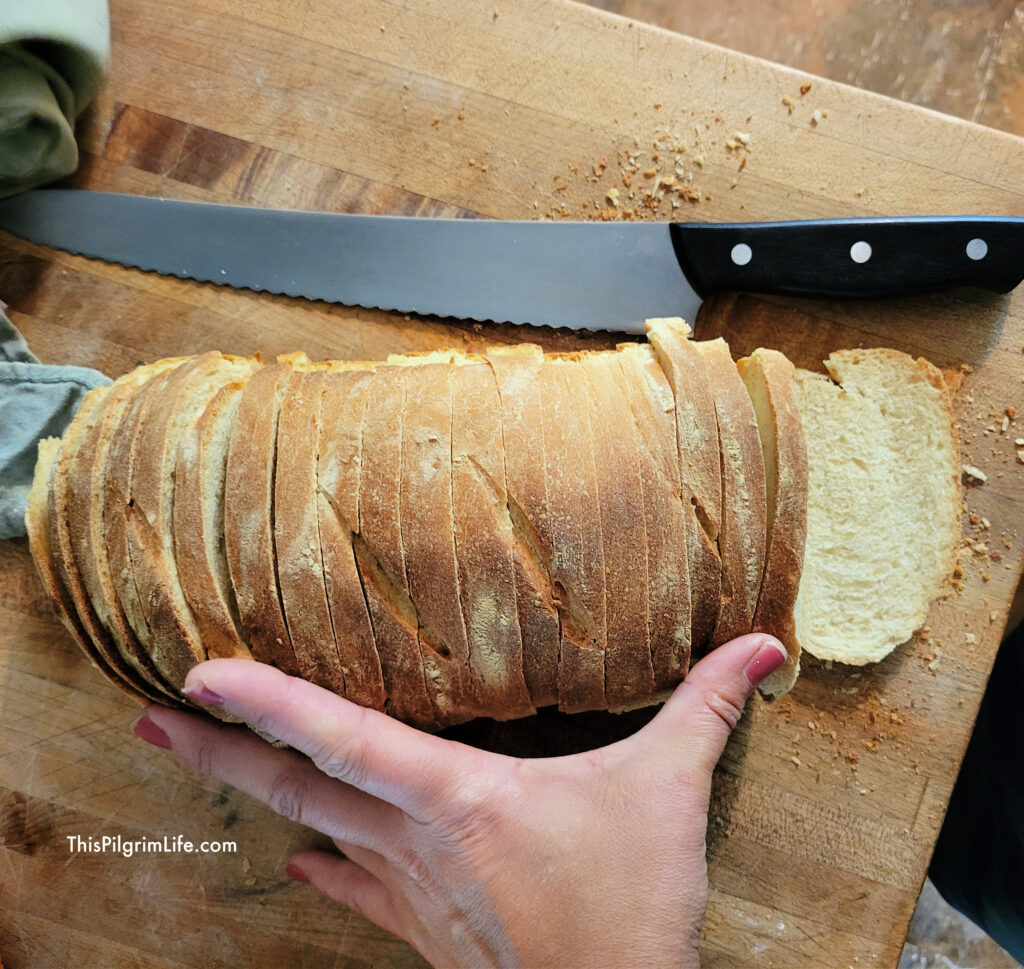
Everyday Sourdough Boule from the Artisan Sourdough Made Simple cookbook. (Highly recommend!)
Sourdough Sandwich Bread from Venison for Dinner. (She also now has a soft master dough recipe I would like to try soon).
- Bread Lame & Danish Dough Whisk
- Kitchen Scale
- Lodge Cast Iron Double Baker ::
- Victorinox Bread Knife
- Sandwich Loaf Pans
- Flour Sack Tea Towels
- Plastic Bread Bags (or Linen bread bags)

I hope this was helpful for getting an idea of one way to fit sourdough baking into a regular weekly routine. I don’t think I’ve mentioned this yet, but I do my baking for the week on the weekend. Occasionally I will do a mid-week bake, but since we are busy with school and work in the mornings during the week, it’s usually easier to do most baking on the weekends.
If you want more sourdough baking resources and recipes, check out my Sourdough for Beginners post! You can find great recipes, podcast recommendations, FAQs, and more.
Sharing is caring! Don’t forget to pin and share. Thank you!

Definitely making this to change things up!
Hi, can you share what the rest of the week looks like? Do you just let your starter sit the rest of the week? I already bake yeasted bread and have a pretty good schedule for that. It’s keeping the starter fresh day 2-7 that I am looking for information about. Everything seems to say your starter needs fed every 8-24 hours which complicates the week and wastes a lot of flour.
I tried the sourdough sandwich bread today but it didn’t rise very much on the second rise. It is cold outside here but 78 degrees in my house. I let it rise 3 hours after shaping. Should it double? Thanks!
Sorry that should say 68 degrees.
I loved seeing how you do it! I’ve been making sourdough bread for the last few years but it’s pretty random as to when. I actually baked the Venison for Dinner sandwich bread today after seeing it on your IG. My family loved it!
As far as covering the dough bowls if you’re trying to find something reusable to avoid the plastic wrap, I’ve had great luck with the silicone bowl lids (we actually use them a ton for other stuff, too). I have a nesting 5 pack from amazon and they are so great, called, “Silicone Bowl Lids Blue Set of 5 Reusable Suction Seal Covers for Bowls, Pots, Cups. Food Safe. Natural grip, interlocking handles for easy use and storage.”